If you’ve ever thought about learning a new language, you’ve probably come across two names: Rosetta Stone and Jumpspeak. Both claim to help you speak fluently and confidently. But which one actually delivers on that promise?
In this article, we’re going to break down everything—from how each program teaches, to how they feel to use, what they cost, and what real users think. And by the end, it’ll be clear why Rosetta Stone comes out on top in every important area.
Let’s start with what each of them actually is.
🧾 Product Overviews
Rosetta Stone
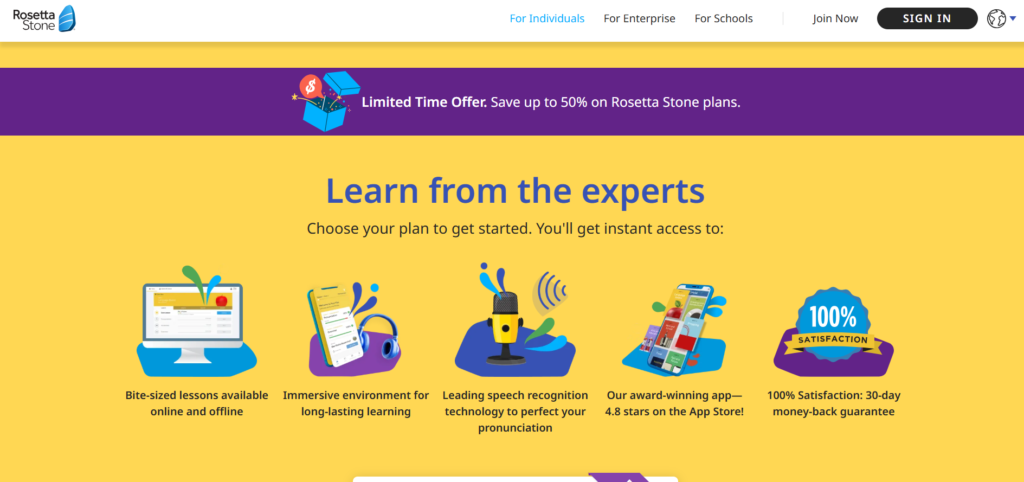
- Founded: 1992
- Method: Immersive learning (no translations; pictures + context)
- Languages Offered: 25+
- Key Feature: TruAccent® speech recognition
- Access: Desktop, Mobile App (iOS/Android), Offline Access
- Best For: Beginners to advanced learners; people serious about mastering all language skills
- Pricing: One-time payment for lifetime access or monthly plans
Jumpspeak

- Founded: 2020s
- Method: AI-based conversational learning
- Languages Offered: Around 10
- Key Feature: Chat with AI characters in real-time
- Access: Mobile App only
- Best For: Intermediate learners looking to practice speaking
- Pricing: Monthly/annual subscriptions; lifetime plan available
✅ 10 Key Comparison Points
Let’s now look at how these two platforms compare across twelve critical points.
1. Teaching Method
Rosetta Stone uses a method called Dynamic Immersion. That means you won’t rely on translations. Instead, you’ll connect words to images, situations, and feelings—just like you did as a child learning your first language.
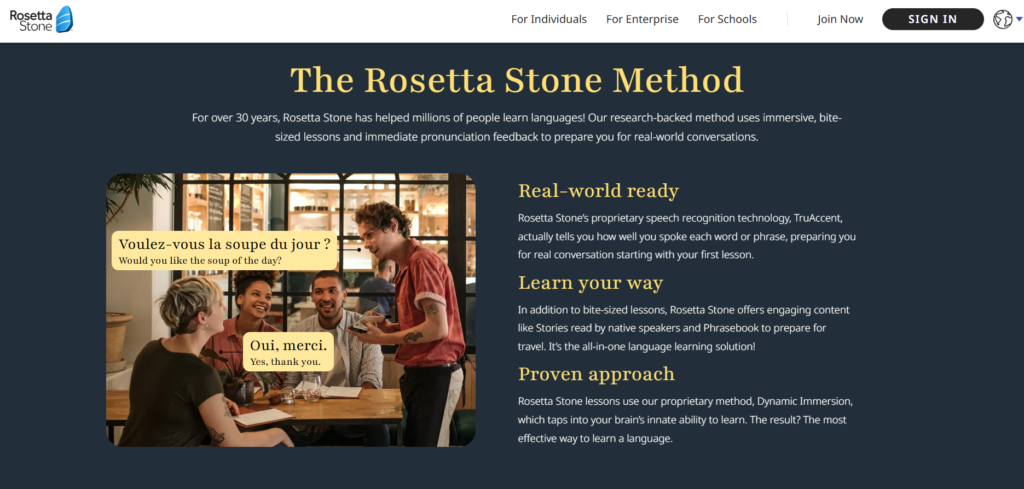
Jumpspeak focuses on conversation first. You chat with an AI in real time. It’s like having a robot language partner.
🟢 Winner: Rosetta Stone
Immersion builds a deep, long-term foundation. Jumpspeak is great for practice, but it doesn’t build up reading, grammar, or comprehension as well.
2. Language Selection
Rosetta Stone offers 25+ languages including Spanish, French, Italian, Chinese, Arabic, Russian, and more.

Jumpspeak has about 21 languages, focusing mostly on popular choices like Spanish, French, and German.
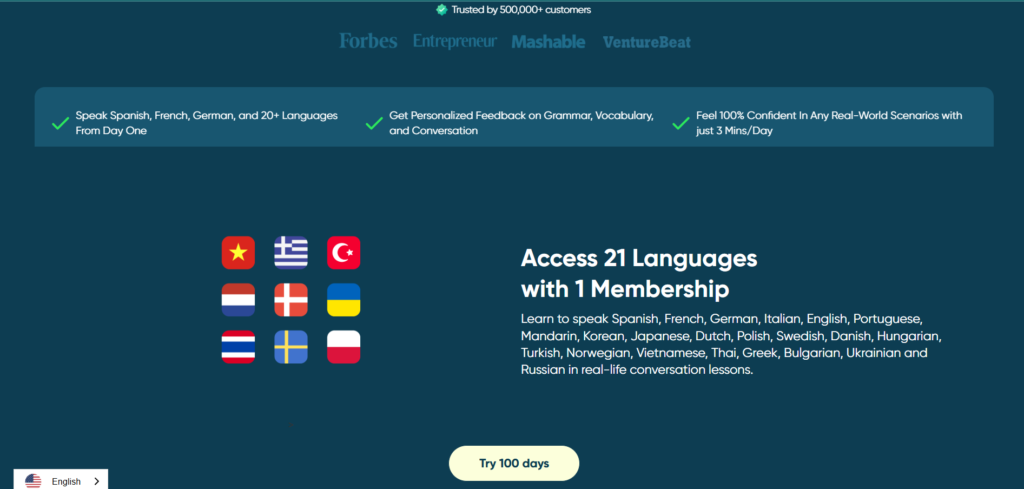
🟢 Winner: Rosetta Stone
You get more variety and choice.
3. Content Depth
Rosetta Stone offers a full curriculum. You’ll work through structured lessons that cover reading, writing, listening, and speaking.
Jumpspeak is more casual. You jump into simulated conversations but there’s not much formal teaching of grammar or sentence structure.
🟢 Winner: Rosetta Stone
It’s not just practice—it’s real learning, with all skills included.
4. Speech Feedback
Rosetta Stone’s TruAccent® speech recognition tool is highly accurate and helps correct your pronunciation instantly.
Jumpspeak gives feedback through AI conversation partners, but it’s less precise and doesn’t provide in-depth corrections.
🟢 Winner: Rosetta Stone
Better feedback means better results.
5. Offline Access
Rosetta Stone lets you download lessons and learn offline—perfect for travel or commutes.
Jumpspeak requires an internet connection for most features, especially AI chats.
🟢 Winner: Rosetta Stone
More flexible learning, anytime, anywhere.
6. User Experience
Rosetta Stone has a clean, calming interface with visual-focused learning. It’s easy to navigate and doesn’t overwhelm you.
Jumpspeak is energetic and modern, but it can feel a bit rushed or intense for beginners.
🟢 Winner: Rosetta Stone
It feels more like a guided experience than a tech experiment.
7. Progress Tracking
Rosetta Stone tracks your progress clearly, showing how you’re improving over time and where you need more practice.
Jumpspeak is more casual—it’s about conversation milestones, not detailed performance stats.
🟢 Winner: Rosetta Stone
When you can measure your progress, it keeps you motivated.
8. Writing & Reading Skills
Rosetta Stone builds writing and reading into the learning journey naturally.
Jumpspeak skips these areas. It’s focused on spoken language only.
🟢 Winner: Rosetta Stone
Language isn’t just about talking—reading and writing are essential, especially for travel or work.
9. Learning Levels
Rosetta Stone supports learners from beginner to advanced, adjusting difficulty as you go.
Jumpspeak is better suited for people who already know some basics and just want speaking practice.
🟢 Winner: Rosetta Stone
It grows with you, no matter your starting point.
10. Customer Support & Extras
Rosetta Stone offers live tutoring, community forums, and technical support with real humans.
Jumpspeak is mostly self-directed with limited human support.
🟢 Winner: Rosetta Stone
Extra support means you never get stuck or lose momentum.
💰 Pricing Comparison
When you’re investing in a language learning tool, cost matters—not just the price, but what you actually get for it. Here’s how Rosetta Stone and Jumpspeak stack up side by side.
Rosetta Stone Pricing
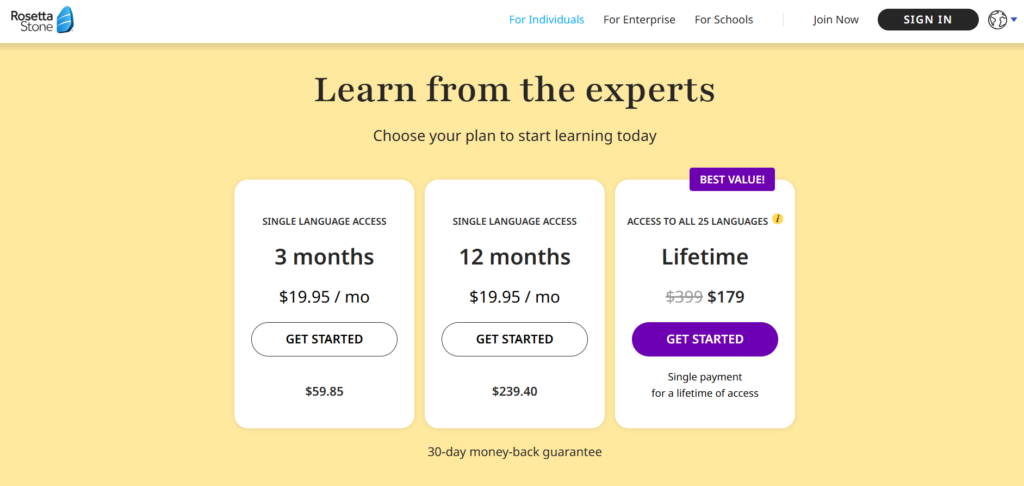
| Plan Type | Price | Details |
|---|---|---|
| 3-Month Plan | $35.97 total | Billed as $11.99/month |
| 12-Month Plan | $95.88 total | Billed as $7.99/month |
| Lifetime Plan | $179 one-time | Full access to all 25 languages, forever |
Key Benefit: No recurring fees if you choose the lifetime option. Learn as many languages as you want, for as long as you want.
Jumpspeak Pricing
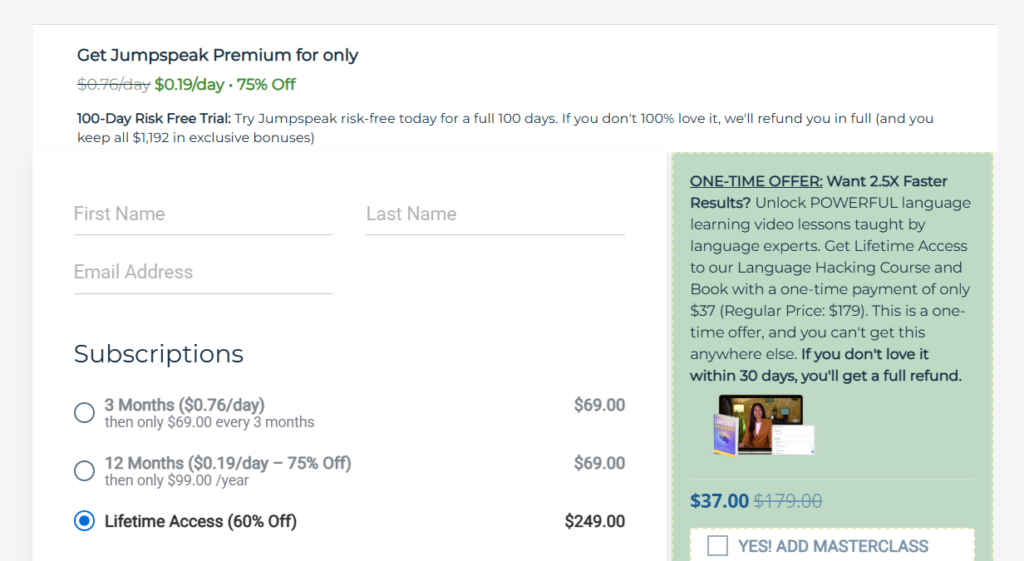
| Plan Type | Price | Details |
|---|---|---|
| Monthly Plan | $11.99/month | Access to one language |
| Annual Plan | $119.99/year | About $10/month |
| Lifetime Plan | $249 one-time | Access to one language only |
Key Limitation: Even the lifetime plan typically limits you to one language, and it’s more expensive than Rosetta Stone’s.
🔍 The Value Breakdown
Let’s break it down simply:
- Rosetta Stone gives you 25 languages for a lower lifetime cost.
- Jumpspeak gives you 1 language for a higher lifetime cost.
- Rosetta Stone’s plans are also more affordable for short-term learners or those just testing the waters.
🟢 Winner: Rosetta Stone
You get way more value—more languages, more features, and a one-time payment that actually feels fair.
⭐ Real User Impressions
Here’s what actual users are saying across review sites and forums:
- Rosetta Stone users love the structure, the immersion, and how intuitive it feels. Many say it’s the only tool that helped them stick with it and make real progress.
- Jumpspeak users enjoy the quick chats and fun interaction, but some mention that it doesn’t feel like “real learning”—more like language role-play.
🔚 Final Thoughts: Why Rosetta Stone Wins
While Jumpspeak is fun and useful for people looking to sharpen their speaking skills quickly, it doesn’t offer the full package. It’s like jumping into a conversation without understanding how sentences are built or why certain phrases work the way they do.
Rosetta Stone, on the other hand, gives you everything you need: structure, immersion, pronunciation practice, writing, reading, cultural insights, and long-term value.
If you’re serious about learning a new language—not just pretending to chat, but truly mastering it—Rosetta Stone is the clear winner.
FAQ’s
Does Rosetta Stone have cultural learning?
Yes, Rosetta Stone includes cultural context in its lessons.
Which app is more suitable for serious learners?
Rosetta Stone is better for learners aiming for full fluency.
What’s the lifetime cost of Rosetta Stone?
A lifetime Rosetta Stone subscription costs around $179.
Is Jumpspeak more affordable in the short term?
Yes, but monthly costs can add up over time.
Who has the more intuitive interface?
Rosetta Stone’s interface is simpler and easier to navigate.
